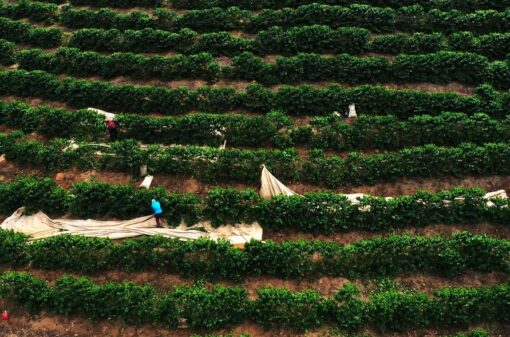
Coffee harvesting step by step
The harvesting period is decisive to the quality of coffee
Do you know which steps coffee is supposed to follow until your cup? At first, different steps define the production. Specially, coffee harvesting is one of the most important parts of the chain.
Know the reasons with Hub do Café.
Browse the content:
- How is coffee harvesting carried out?
- How to know the right moment to start coffee harvesting?
- Coffee harvesting in Minas Gerais
- Coffee harvesting in Brazil
How is coffee harvesting carried out?
The coffee cherries undergo the first sorting during harvesting. Therefore, this process is vital for valuable quality and origin.
The ideal moment to start harvesting must be decided through careful planning.
So, considering social and financial aspects, coffee harvesting is the most important operation, for it directly influences product’s good quality.
How to know the right moment to start?
The ideal period depends on factors related to terroir and the crop itself, like variety, planting system, rainfall, soil and exposure to the Sun, which are determining for the fruits.
Specifically In Brazil, the harvest period usually takes place from April to September, with a peak between June and August. Of course it varies from region to region.
The process of harvesting must occur during the period of better uniformity in ripeness. It means, when the number of unripe and post-ripe (over-ripe and dried) fruits is minimum.
Remarkably, unripe fruits cause losses in aspect and market price.
Yet, over-ripe fruits increase undesired fermentation and the number of fruits that fall off coffee trees before harvesting.

Coffee harvesting in Minas Gerais
Each region has its own characteristics, that involve relief, altitude and other features. In short, these particularities influence production and quality of coffee.
According to Luiz Evandro Ribeiro, Coordinator of Cooxupé’s Department of Classification, the process occurs in different ways, depending on each region conditions.
“At Mogiana region, harvesting is carried out with machines in part of the plantations. In the other plantations hand-picking is indicated. At South of Minas Gerais, there is a lot of machine-picking. At Cerrado, also in Minas Gerais, almost all of the harvest is mechanized,” he explains.
Though, deciding when to start the process is always up to the farmer. It is recommended the space between lines, near the bottom of coffee trees, to be cleansed about 30 days before. This is important to remove residues and ease the harvesting.
Coffee harvesting in Brazil
Currently, coffee is one of Brazil’s most important agricultural products. Its impact on exports and on the image of the country is remarkable.
Not always has the scenario been like this. The plant was first grown in the country by the 18th century. It moved slowly from Pará (North) towards Rio de Janeiro, Minas Gerais and São Paulo (Southeast).
Luiz Evandro says that, in the 19th century, the production started to increase, which enabled better revenue and consequent demand for modernization of processes. Thus, a few decades later some improvements started to be implemented, like trainings for workers, use of new technologies, better usage of resources with focus on production, warehousing and transportation.
“The quality standard is very strict for products that are sent to the international market. In the past, coffee in natura was transported from the farms in 60Kg sacks to preserve its characteristics. Currently, the transportation made either in big bags or in-bulk, which is more practical,” he highlights.
Even small producers, which are the great majority of Cooxupé’s members, are benefited by the popularization of the technologies. The Coordinator of Classification also affirms that technology reduces production costs and favours the harvesting.
“Tree shaker machines for picking coffee are small practical machines that help a lot. These machines are good for work in mountainous crops, enhancing the work of persons in hand picking,” Luiz Evandro states.




